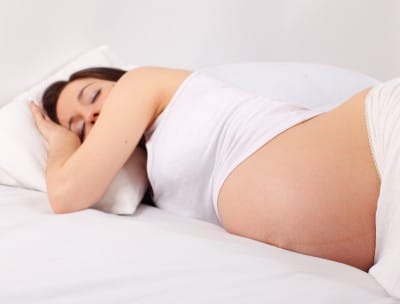Preeclampsia is thought to affect approximately five percent of all pregnancies. The condition usually starts around the 20th week of pregnancy. It is linked to a higher risk of fetal growth restriction, and often, the mother must deliver early to prevent serious health complications for her and the baby. Symptoms include high blood pressure and protein in the urine.
Sleep apnea, a condition characterized by abnormal pauses in breathing while sleeping, has been linked to negative pregnancy outcomes in some studies. For women that suffer from both sleep apnea and preeclampsia, the risk to baby are even further multiplied than if the mother had only one condition or the other.
A recent study, conducted by Colin Sullivan, PhD, and colleagues, has found that treating sleep apnea through continuous positive airway pressure (CPAP) could help improve fetal activity levels at night, which, in turn, could help improve fetal health and delivery outcomes.
“What would have otherwise been considered clinically unimportant or minor ‘snoring’ likely has major effects on the blood supply to the fetus, and that fetus, in turn, protects itself by reducing movements,” Sullivan told Science Daily. “This can be treated with readily available positive airway pressure therapy and suggests that measurement of fetal activity during a mother’s sleep may be an important and practical method of assessing fetal well-being.”
The three-part study started with the validation of a fetal activity monitor against ultrasound in 20 normal pregnant women during their third trimester. During the second phase, overnight fetal movement was monitored in 20 pregnant women with moderate to severe preeclampsia and in 20 matched control women (pregnancies without preeclampsia). In the final stage, fetal movement was measured on two consecutive nights in 10 women with moderate to severe preeclampsia – the first night without treatment and the second with CPAP therapy.
Results showed significantly fewer fetal movements during sleep in the mothers with preeclampsia than those in the control group (289 vs. 689). What’s more, fetal movement in women with the condition decreased steadily throughout the night.
Researchers found that women with preeclampsia also suffered from mild sleep-disordered breathing. On average, they had an apnea/hypopnea index of 7.0 breathing pauses per hour of sleep. When placing the mothers on a minimal mean of CPAP pressure of 7 com H2O, researchers found that the average number of fetal movements in women with preeclampsia increased from 319 (without treatment) to 592 (with treatment), placing them much closer to the number of fetal movements per night found in the control group. Additionally, fetal movements in the mothers with preeclampsia increased by 12.6 movements per hour while on CPAP therapy.
“Maternal SDB represents a unique opportunity to study the effect of in utero exposures on postnatal development and future risk. This has major implications for public health,” Louise M. O’Brien, PhD, MS, associate professor at the University of Michigan wrote in a commentary on the study. “It raises the possibility that a simple, noninvasive therapy for SDB may improve fetal well-being.”
Related Articles:
- Taking Antidepressants during Pregnancy Not Linked to Higher Risk of Stillbirth or Infant Death
- Babies May be Able to Recognize their Native Tongue at Birth, Study Says
- Dad clicks Unborn Baby’s Amazing picture holding Doctor’s Finger







